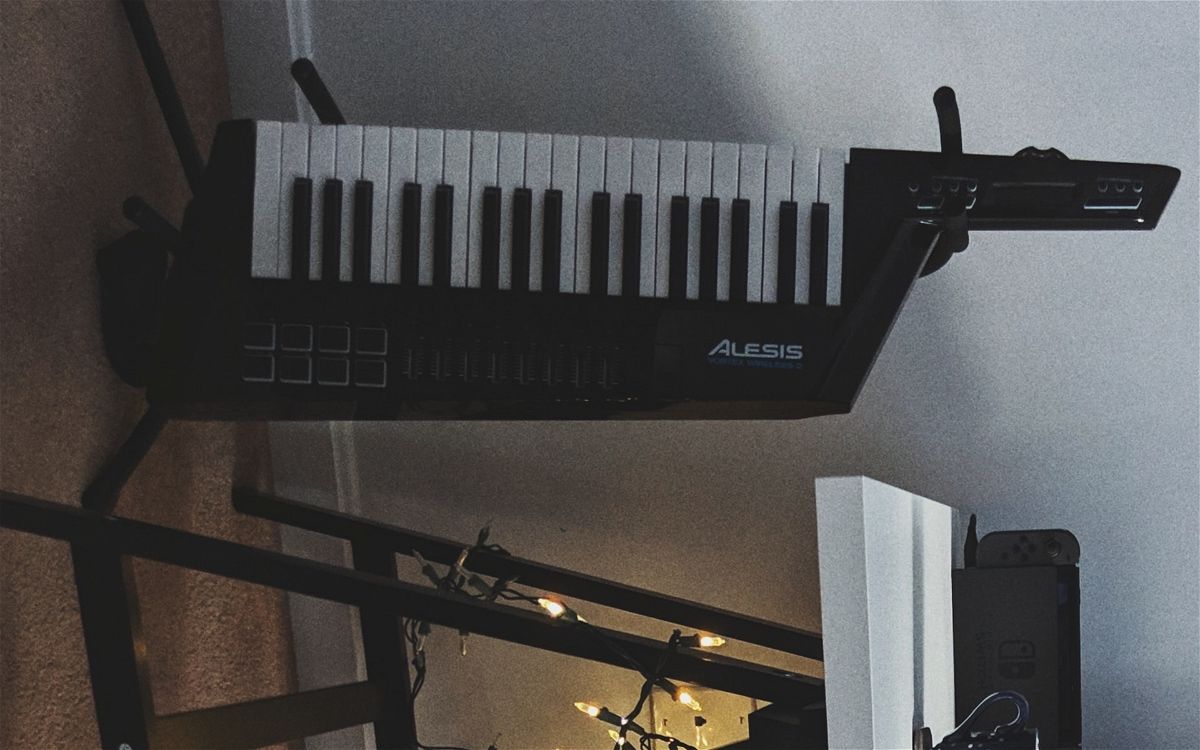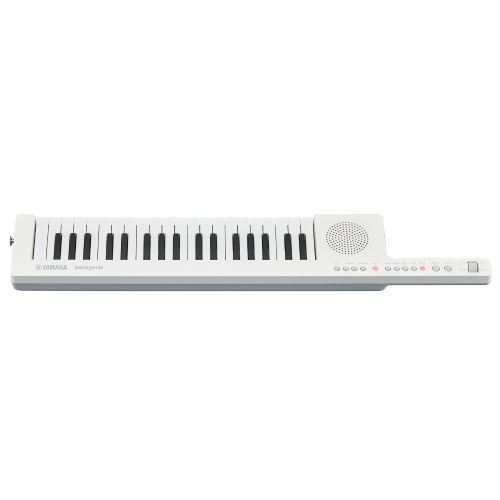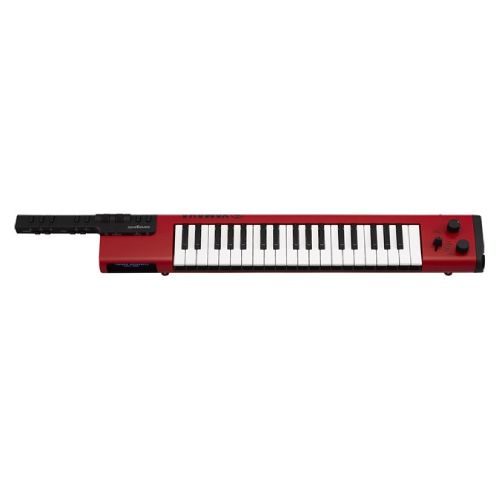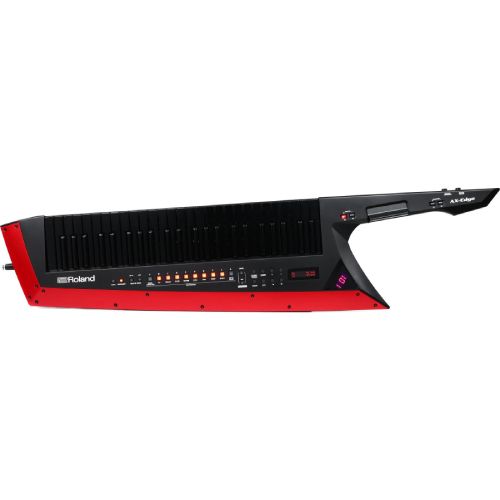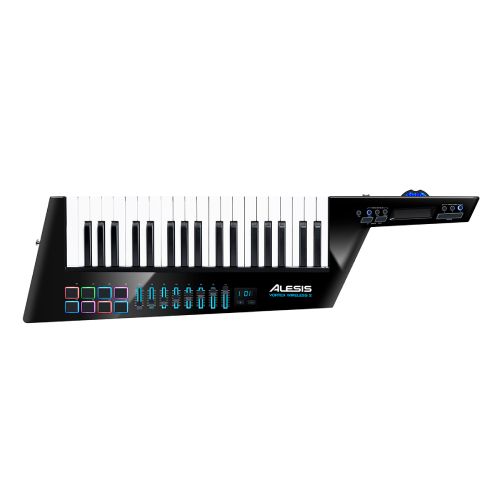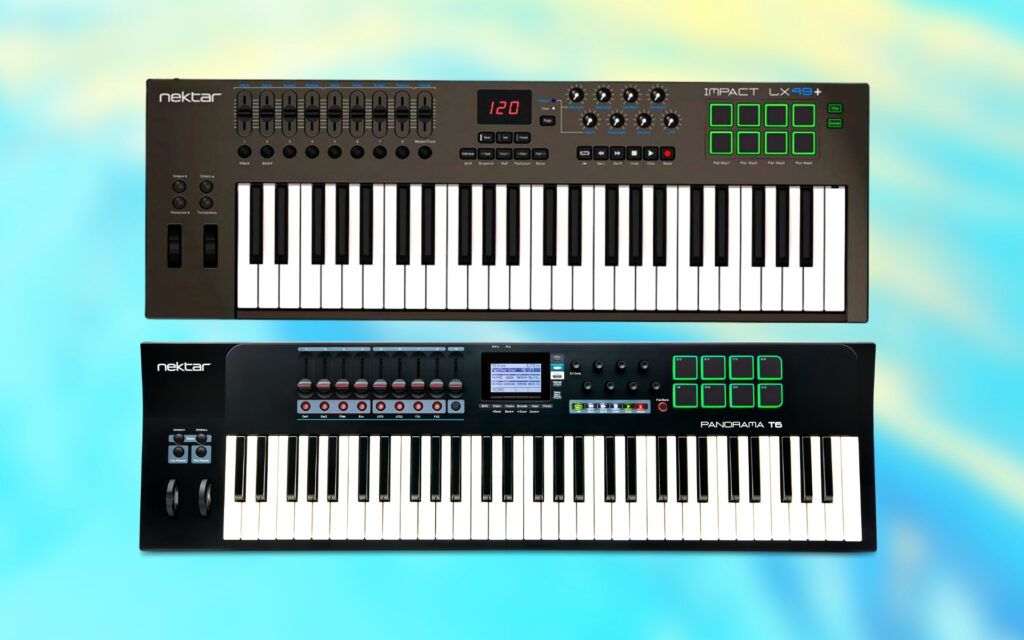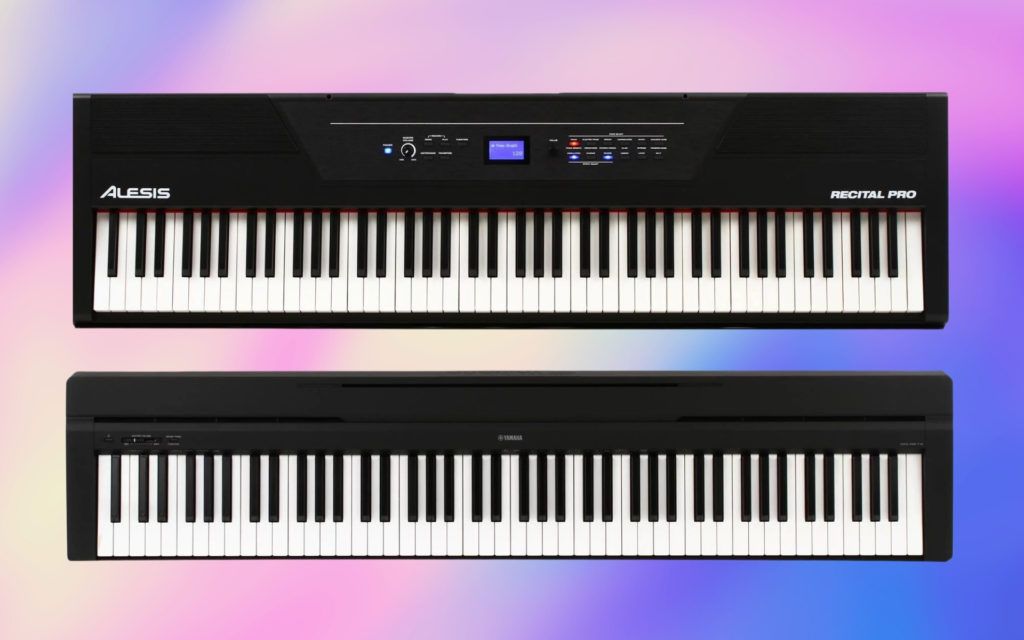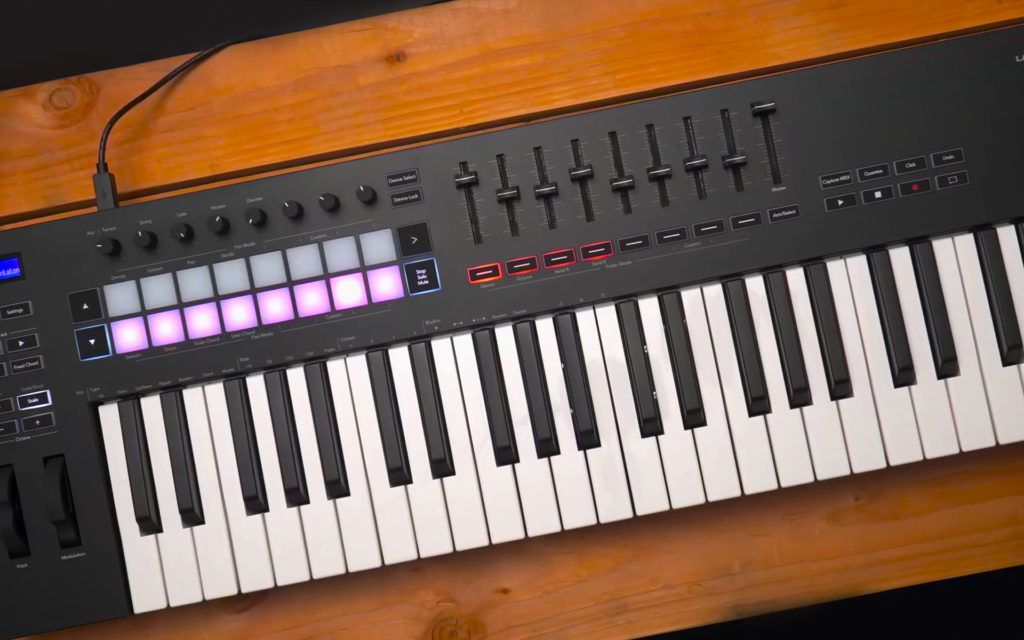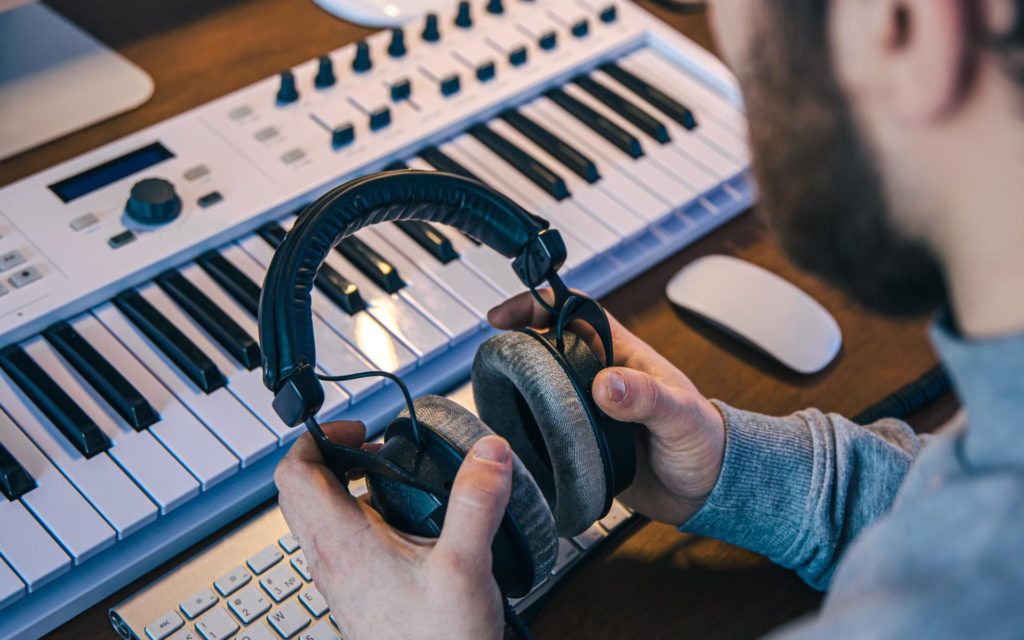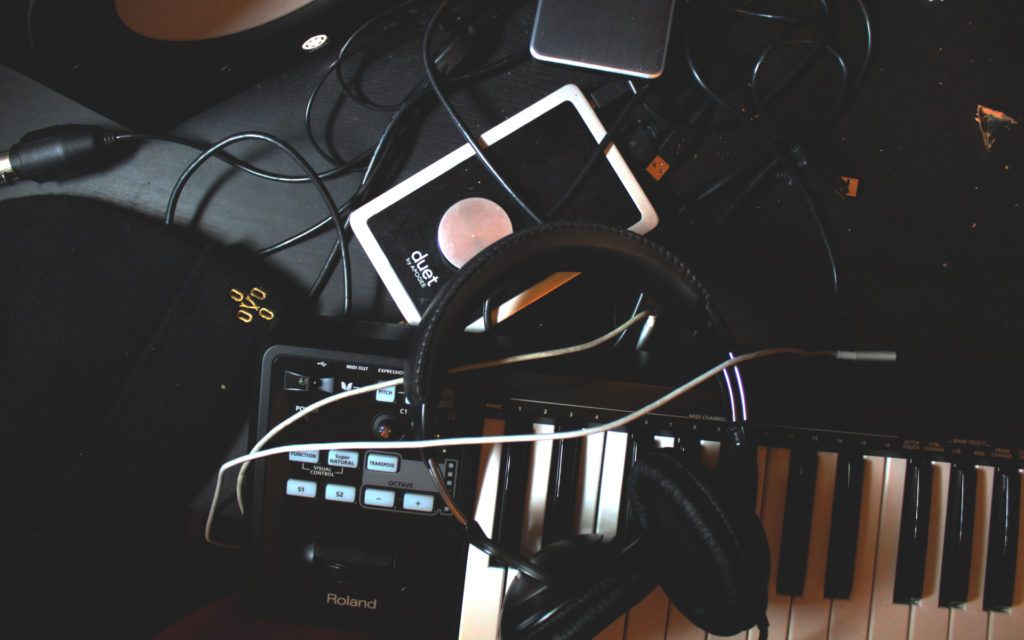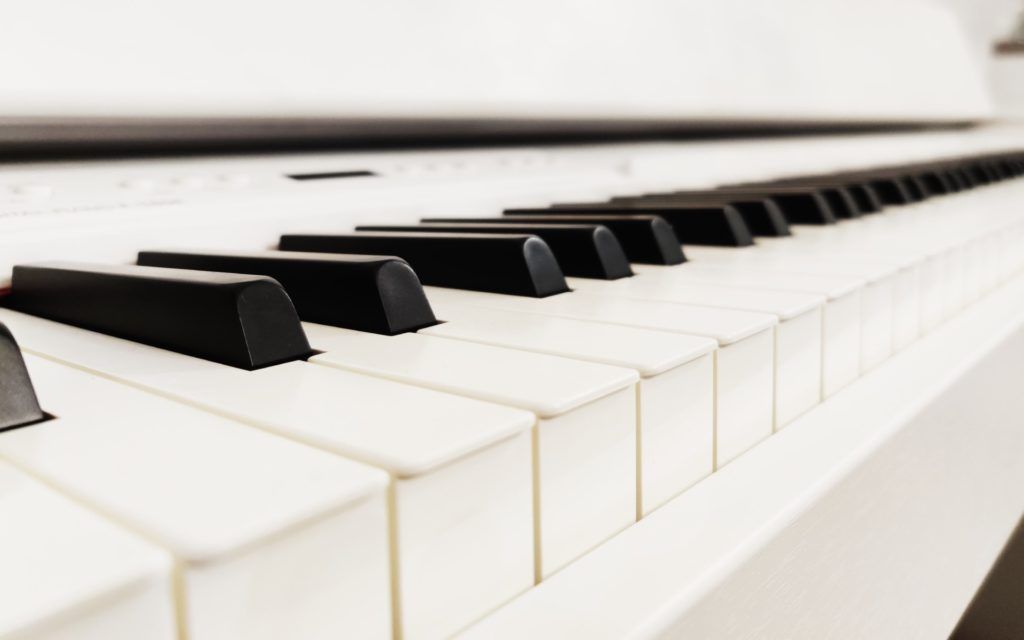We review products independently and our recommendations are genuine. If you purchase through links on our site, we may earn an affiliate commission. Learn More
If you’re looking to buy a keytar, you’ve come to the right place! In this buyer’s guide, we explain the basics of a MIDI keytar in more depth and also offer information on the most important features to look at when shopping for this exciting instrument! Read on to discover the best keytars available on the market.
What are the Best Keytars?
Keytar Reviews
Roland AX-Edge 49-key Keytar Synthesizer
| FEATURES | RATING | PRICE | |||
|---|---|---|---|---|---|
| FEATURES |
|
OUR RATING | PRICE |
|
Roland AX-Edge 49-key Keytar Synthesizer Review
The Roland AX-Edge is a 49-key MIDI keytar synthesizer, which is able to boast more than 500 onboard sounds. Roland is one of the biggest names associated with keytars and this particular model functions as a MIDI controller, but is also a self-contained instrument in its own right as well, separating it from many rivals.
Boasting 49 full-size, velocity-sensitive keys, along with chorus, reverb, master, and master compressor controls, there is plenty of scope to adjust your sound. Meanwhile, the instrument can be either powered through the DC power supply provided, or by making use of the five-hour battery life, allowing you to play on a fully wireless basis.
It is worth stressing that the Roland AX-Edge is the most expensive option on this list, so it will not be suitable for those seeking a cheap keytar to experiment with. Nevertheless, it is a high-quality keytar MIDI controller, which is going to be suitable for use in any setting, including for professional studio use, or use for live performance.
Yamaha Sonogenic SHS-500 37-key Keytar
| FEATURES | RATING | PRICE | |||
|---|---|---|---|---|---|
| FEATURES |
|
OUR RATING | PRICE |
|
Yamaha Sonogenic SHS-500 37-key Keytar Review
If you are looking for the best keytar available on a more limited budget, the Yamaha Sonogenic SHS-500 is able to stake a strong claim. It is also a particularly compact option, which can make it the perfect choice for those with smaller hands, as well as more inexperienced keytar players.
This particular keytar instrument has been designed to allow for MIDI control via wireless iOS connectivity. For absolute beginners, a ‘JAM’ mode is included, allowing you to play along with songs without needing to play the right notes. However, for most players, the more classic features will hold greater appeal, including its 37-note keyboard.
The Yamaha Sonogenic SHS-500 comes with 30 preset voices and includes both pitch bend and modulation wheel controls. Ports include a USB-to-host port, as well as AUX input and output jacks, and you will also have the option of powering the keytar through either the AC adaptor or via six AA batteries.
Alesis Vortex Wireless II Wireless Keytar Controller
| FEATURES | RATING | PRICE | |||
|---|---|---|---|---|---|
| FEATURES |
|
OUR RATING | PRICE |
|
Alesis Vortex Wireless II Wireless Keytar Controller Review
Another excellent keytar MIDI controller comes in the form of the Alesis Vortex Wireless II, which builds upon the manufacturer’s first-generation wireless keytar. Benefiting from improved ergonomic design, the instrument is comfortable to hold and play, and it is capable of connecting wirelessly to either a PC or Mac.
The keytar keyboard features 37 velocity-sensitive keys, along with various sound control options on the neck, allowing you to really shape your sound. Backlighting helps to make the various controls easier to find, while eight velocity-sensitive drum pads provide great scope for further experimentation.
A USB dongle can be connected to your chosen device, in order to provide wireless connectivity, while USB and MIDI jacks allow the instrument to be connected to a MIDI sound module or similar hardware. As an added bonus, the Alesis Vortex Wireless II is also sold with a comprehensive production software package.
Yamaha Sonogenic SHS-300 MIDI Keytar
| FEATURES | RATING | PRICE | |||
|---|---|---|---|---|---|
| FEATURES |
|
OUR RATING | PRICE |
|
Yamaha Sonogenic SHS-300 MIDI Keytar Review
Finally, another relatively cheap keytar option can be found with the Yamaha Sonogenic SHS-300. It is an excellent option for complete beginners and the ‘JAM’ feature even makes it accessible to those with no experience playing a musical instrument and no real interest in learning complicated techniques.
With that being said, with the ‘JAM’ feature turned off, the keytar also functions well as a conventional keytar, boasting a compact 37-key keyboard, 12 voices and controls for pitch bend, vibrato and sustain. Yamaha is widely recognized as one of the biggest names in the keytar market, with a strong reputation for build quality.
The Yamaha Sonogenic SHS-300 is sold with a free chord tracking app, which can help to make learning the instrument easier. While it is clearly geared towards novice players and those who have more casual needs, the keytar will also suit more advanced requirements too and USB/MIDI and Bluetooth connectivity provides plenty of options to work with.
Buyer’s Guide: How to Find the Best Keytar
The keytar is a unique instrument, which holds a lot of appeal because it combines features of two of the most popular instruments around – the keyboard and the guitar.
What is a Keytar?
The word ‘keytar’ is a portmanteau made up from the words ‘keyboard’ and ‘guitar’ and thinking of these two instruments and how they work is a useful starting point. Essentially, a keytar is an electronic keyboard, which is shaped like a guitar, allowing it to be held and played like one.
Categorized as a synthesizer, the instrument will typically include a shoulder strap, allowing it to be worn over the shoulders and neck. A keytar with MIDI control like the Yamaha Sonogenic SHS-500 or SHS-300 will send MIDI data to a compatible device or piece of hardware, and this will then produce the musical notes that have been played.
While keytars are broadly designed to resemble guitars, the precise shapes can vary drastically. Famous keytar players include Lady Gaga, Matt Bellamy from Muse, Damon Albarn from Blur, and Imogen Heap.
How to Play a Keytar
In terms of actually playing the keytar, it is held like a guitar, but the main notes are played via a keytar keyboard. For this reason, prior experience playing a keyboard or piano will always be advantageous. Meanwhile, the neck of the keytar will have additional controls, such as sustain and pitch bending, allowing for more advanced play.
Beyond this, some keytars also include additional buttons or controls, and these may include drum pads. In most cases, it is also possible to move between different ‘voices’, similar to with an electronic keyboard.
The single biggest benefit a keytar offers over a more conventional keyboard or piano is the range of motion afforded to the person playing the instrument. This means you can play a keytar on stage and move around much more freely, rather than having to stay in a single place, next to a stationary instrument.
As a result, the visual quality of a live performance can be greatly enhanced.
How do Keytars Transmit MIDI Data?
Although some keytars function as viable instruments in their own right, most are actually a keytar MIDI controller instead. This means that the instrument does not actually produce musical sounds of its own and instead sends a signal to a Musical Instrument Digital Interface (MIDI) device, such as a sound module.
The MIDI data itself can be sent to the device via a MIDI cable, while many modern instruments also allow this data to be sent wirelessly, providing greater freedom. The data sent to the MIDI device will typically include the key (or keys) pressed, as well as data about how hard each key was pressed and for how long.
What Features Do You Want?
When it comes to selecting the best keytar for your needs, there are a number of features to be aware of and look out for. First, you will need to look at how many keys the keytar has. The most common configuration is 37 keys like the Alesis Vortex, this is relatively compact, but some larger or more advanced keytars like Roland AX-Edge have a full 49 keys to work with.
It is also worth looking into whether or not the keys are velocity-sensitive. If they are, this will afford you far greater control over your sound. Beyond this, you should also look into the additional controls on offer, such as pitch bend, vibrato, and sustain, as well as any extras, such as the presence of drum pads and the number of voices available.
Finally, most keytar instrument options will be MIDI controllers, sending MIDI signals to another device to trigger the sounds. The connection here may be wired or wireless. Similarly, some keytars are powered via a power cable, others make use of batteries, but most will offer a combination of the two options.

